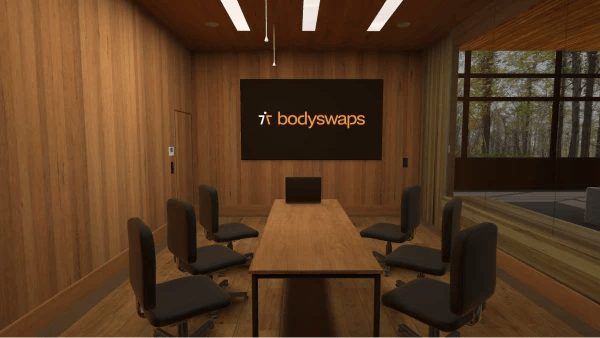Resolving Conflict
Tutor notes
Resolving workplace conflicts is challenging due to several factors, such as the diversity of personalities, backgrounds and perspectives that exist within a team. These differences can lead to misunderstandings and miscommunications, making it hard to find common ground. Emotions often run high during conflicts, which can cloud judgement and escalate tensions.
Despite these challenges, resolving conflicts is crucial for maintaining a healthy and productive workplace. This immersive module helps learners to practise conflict resolution skills at management level, to promote better communication and understanding among the team, and advocate for a more supportive working environment.
About this resource
Key learner outcome and goals
Learning outcome
To practise your conflict resolution skills at management level within a workplace setting.
Learning goals
- Identify instances of unprofessional behaviour
- Provide constructive feedback on addressing discriminatory behaviour and mediating disputes between team members
A word about terminology
As a medium, Virtual Reality is not best suited to didactic teaching methods.
However, our intention is that all Bodyswaps modules follow a student-centred constructivist pedagogy. This means creating rich experiences in which learners can explore key concepts and ideas and reach their own conclusions.
This is why our documents speak in terms of learning goals and outcomes, rather than measurable ‘learning objectives’ (a la Bloom’s Taxonomy) per se.
Module structure
This learning journey takes the learners through four topics and ends with self-reflection and an exit survey. It is a linear experience, meaning the learner will be guided step by step through all the activities. We recommend that learners fully interact with each activity to get the full benefit.
It is estimated that each topic will take the learner approximately 3 minutes to complete, although completion times vary depending on whether the learner chooses to fine-tune their freeform responses.
Learner journey
.svg)
.svg)
.svg)
.svg)
.svg)
.svg)
.svg)
Characters

.webp?width=720&height=1050&name=abeeku%20(1).webp)
Abeeku
Employee, member of Jeremy’s team
Florence
Employee, member of Jeremy’s team.webp?width=720&height=1050&name=leo%20(4).webp)
Leonard
Employee, member of Jeremy’s teamEnvironments

Meeting room
Purpose
Location
Characters
N/A
Journal
Duration
1:00
The first time learners use Bodyswaps, this onboarding sequence familiarises them with the features of the app, takes them through an avatar selection and embodiment activity, and prepares them for the experience to come.
During the induction, learners will:
- Find out how this training is different from the rest
- Select their avatar
- Discover their virtual journal
- Learn how to navigate and use the tools and settings
Purpose
To illustrate an example of mismanagement that facilitates conflict in a workplace
Location
Characters
Journal
Duration
The learner assumes the role of a boss overseeing Jeremy - the line manager of a small team working on a collaborative project. Jeremy's team comprises three men and one woman, Florence, who feels unheard and unappreciated. One team member, Abeeku, has difficulty working with women and is particularly averse to Florence's conduct.
In this activity the learner is a fly on the wall. Jeremy’s team is due for a meeting, but at this stage only Jeremy and Abeeku are present. Jeremy starts a conversation with Abeeku before the others arrive, thus already setting up a non-inclusive environment. The learner has a chance to see how this leads to a scenario where Jeremy ends up having to listen to Abeeku's grievances about Florence.
Purpose
To provide a realistic and immersive experience of a dysfunctional team dynamic, and help the learner identify key behaviours contributing to it
Location
Characters
Jeremy, Florence, Abeeku and Leonard
Journal
N/A
Duration
Now that all of the team members are present, Jeremy intends to start the meeting properly, but fails to do so due to the lack of clear agenda and assertiveness. This gives room for conflict between Abeeku and Florence to escalate.
The learner’s task is to witness the meeting and click their mouse / controller each time they notice inappropriate conduct displayed by any member of the team, for example foul language or discriminatory remarks between Florence and Abeeku. The screen behind Jeremy lists those conducts as soon as they take place, so the learner has a chance to see them, whether or not they manage to identify them. This also allows the learner to see how Jeremy’s lack of conflict resolution skills impacts the meeting dynamic.
At the end of the activity, the learner is provided with feedback and has a chance to rewind and rewatch the unprofessional behaviours they fail to identify.
By observing this chaotic meeting, learners can experience the real-life consequences of ineffective team management.
Purpose
To practise addressing the root causes of mismanagement that enable workplace conflicts
Location
Characters
Jeremy
Journal
N/A
Duration
The learner now finds themselves sitting across from Jeremy and has a chance to speak to him privately about what they witnessed. Through a guided discussion, learners now practise addressing the root causes of mismanagement leading to discord in a workplace.
This scaffolded conversation will involve a total of five quick exchanges. With each one, the learner has a choice to say one of three options to Jeremy, but only the correct one lets them continue to the next exchange.
The most appropriate options are open ended questions and/or an encouragement for Jeremy to reflect on his management of the meeting. For example:
- What could you do to encourage the team to support each other better? (most appropriate)
- Do you think improving your work-life balance would help improve things for you and the team in general?
- What can you do to ensure your team members behave more professionally towards each other?
If the learner selects one of the other two options, Jeremy will respond defensively or with confusion, allowing them to try again until they find the best response. At the end of the conversation, they can rewind to review Jeremy’s reactions to any unsuccessful choices. A feedback popup will then explain why those choices were unhelpful and how a different approach could have led to a better outcome.
The learner’s focus is to encourage Jeremy to think about his role as an inclusive manager and avoid directly criticising him.
Purpose
To advise Jeremy on better team management and conflict resolution strategies in the future
Location
Characters
Jeremy
Journal
N/A
Duration
Following the previous activity, Jeremy is beginning to reflect on his leadership of the team. This is a good time to encourage him to improve his skills.
Now, the learner is invited to provide feedback on Jeremy’s mismanagement in their own words. The learner is offered the following list of clues to help them in structuring their answer:
- The need to organise meetings effectively
- Remaining impartial
- Steering the meeting
- Addressing non-inclusive language and behaviour
- Leading by example
AI analytics pick up keywords which demonstrate that the learner is offering Jeremy practical examples of strategies that aid conflict resolution and contribute to effective leadership.
To achieve the best results, they need to use Jeremy’s name and provide him with precise examples of non-inclusive behaviour that he should have challenged, for example the language Florence and Abeeku used towards each other. In addition, they should list some aspects that could help Jeremy prepare for his next meeting by referencing “agenda” or “steering”.
At the end of the activity, the learner receives feedback about the keywords they used and a chance to reformulate their answer and talk to Jeremy again, if they wish.
Purpose
Self-reflection: a Likert-style assessment of the learner’s confidence in performing each of the activities covered in the module
Location
Tutor room
Characters
N/A
Journal
N/A
Duration
1:00
In this activity, the learner reflects on their performance using a Likert scale, focusing on several key areas. Firstly, they assess how well they observed non-inclusive behaviour. Next, they evaluate their effectiveness in asking Jeremy questions and encouraging him to reflect on his management style.
Additionally, they consider how well they explained the importance of steering work meetings and communicating the significance of inclusivity. Finally, they assess how effectively they encouraged Jeremy to lead by example.
Purpose
Assess the effectiveness of the training itself
Location
N/A
Characters
N/A
Journal
N/A
Duration
Before the learner leaves the module, they are asked to complete a short survey about their experience.
This survey is not compulsory, but the data helps us to assess the effectiveness of our product and identify any areas that need improvement. Clients also find it beneficial when assessing ROI.
They are asked to mark whether they agree or disagree with the following statements, on a 10 point scale:
- I would recommend this experience to others
- The experience helped me identify elements of my communication skills that I could improve upon
- I now have a better understanding of communication skills in the workplace
